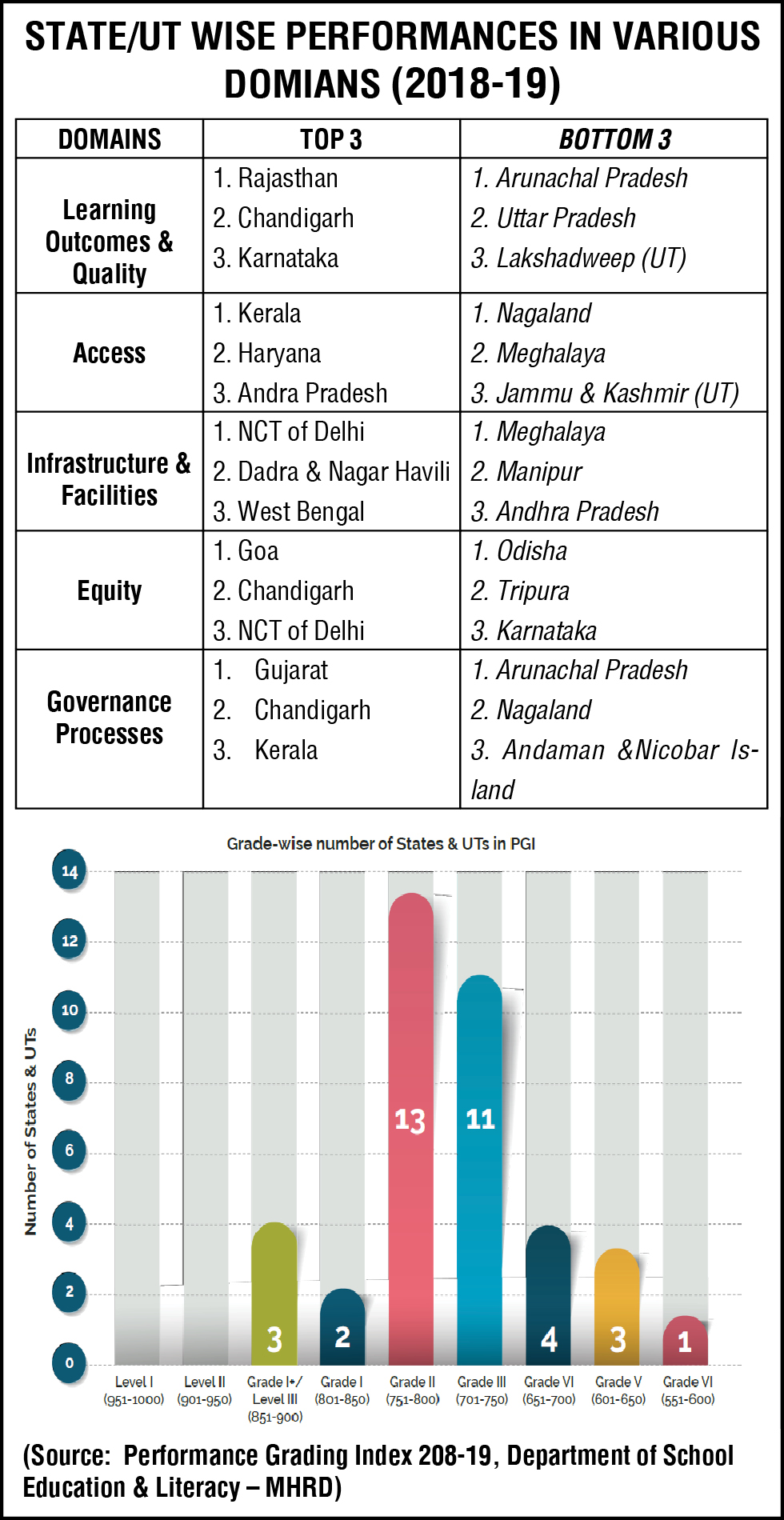1

The Performance Grading Index (PGI) is a tool to provide insights on the status of school education in States and Union Territories (UTs) including key levers that drive their performance and critical areas for improvement.
The schemes initiated by the Department of School Education and Literacy (DoSEL). While the implementation of the Right of Children to Free and Compulsory Education Act, have resulted in significant improvement in accessibility, the PGI focuses from access to quality of education.
The PGI for the States and Union Territories (UTs) was first published in 2019 for the reference year 2017-18. The PGI 2018-19 at State/UT level, published in last week of February has been prepared with the same set of 70 parameters used for PGI 2017-18.
WHY IT IS REQUIRED?
The exercise, which is the first of its kind at such a scale, envisages that the Index will propel the States and UTs towards undertaking multi-pronged interventions that will bring about the much-desired optimal education outcomes. The purpose of is to help them pinpoint the gaps and accordingly prioritize areas for intervention to ensure that the school education system is robust at every level. At the same time it will also act as a good source of information for best practices followed by States and UTs which can be shared.
MAIN INDICATORS/DOMAINS
Learning Outcomes & Quality: The indicators in this domain mainly deal with the scores of students in Language and Mathematics in standard 3, 5 and 8 of Government and aided schools.
Access: The indicators in this domain relate to Net Enrolment Ratio at elementary and secondary level, Retention rate at primary, elementary and secondary level and Transition rate from primary to upper-primary level and from upper-primary to secondary level. Mainstreaming of out of school children is also included in this domain.
Infrastructure and Facilities: The indicators in this domain are mainly related to infrastructure in schools to enable adequate facilities for teaching and learning. These include functional toilets, availability of clean drinking water, Science and Computer laboratories at secondary and senior secondary level, libraries, provision of vocational education, etc.
Equity: This domain deals with indicators relating to comparative performance of learning outcomes of various categories of students (viz. General category vis-à-vis Scheduled Castes/Scheduled Tribes, Rural and Urban areas, Boys and Girls). It also includes Children with Special Needs (CWSN).
Governance Processes: This domain deals with indicators relating to management and administration of school education. The fact that this domain has maximum weightage for the PGI underscores its importance in determining the performance of school education system in States and UTs.
Grading: Based on the indicators, the state, while the previous report kept the highest achievable level at Grade 1, in 2018-19, it was set at Level I, which is for scores 951-1000. In between, an equal width of 50 points has been kept for each Level. In the PGI, Level II means PGI score 901-950, Level III: 851-900, Level IV: 801- 850, and so on up to Level IX: 551-600. The last one, namely Level X is for scores 0-550. The top score has crossed that range and has reached Level III, i.e., score range 851-900. This score range 851-900 is named Grade I+.
Top 3 Performers in 2018-19:
Chandigarh, Gujarat and Kerala
Top Bottom Performers
Arunachal Pradesh, Meghalaya, Nagaland
(MExN with inputs from pgi.seshagun.gov.in; Performance Grading Index 2018-19 States and UTs, Department of School Education & Literacy – MHRD)






